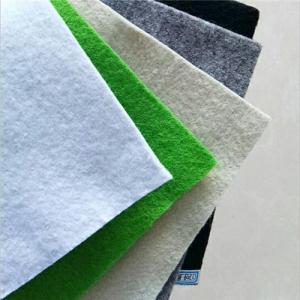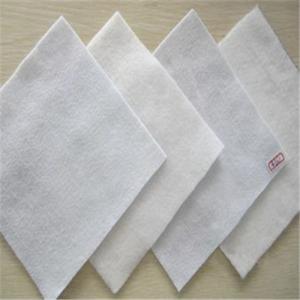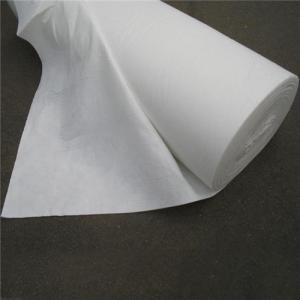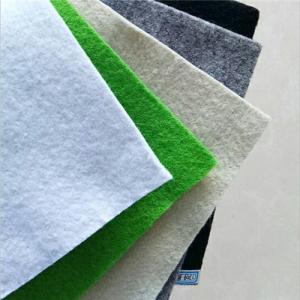Polypropylene Non-woven Geotextile or Non Woven Fabric
- Loading Port:
- China main port
- Payment Terms:
- TT or LC
- Min Order Qty:
- 2000 m²
- Supply Capability:
- 1000000 m²/month
OKorder Service Pledge
OKorder Financial Service
You Might Also Like
Item specifice
Polypropylene Non-woven Geotextile Function:
Effectively spreading,delivering or resolving the concentrated stress to protect the soil from the damage by external force.
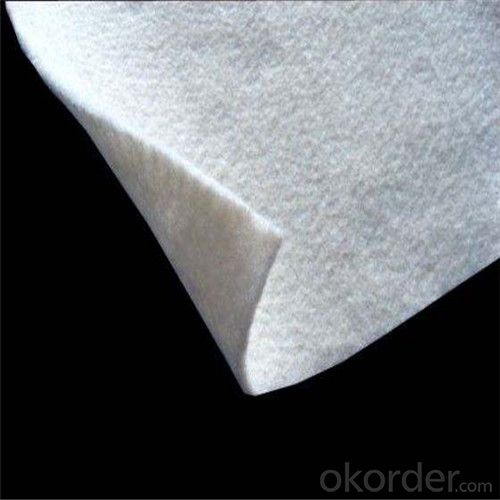
Polypropylene Non-woven Geotextile Application:
The geotextile form impermeable layer inside the soil layer in conjunction with other material (primarily asphalt or plastic film)[mainly used for road,resurfacing,repairing.etc.
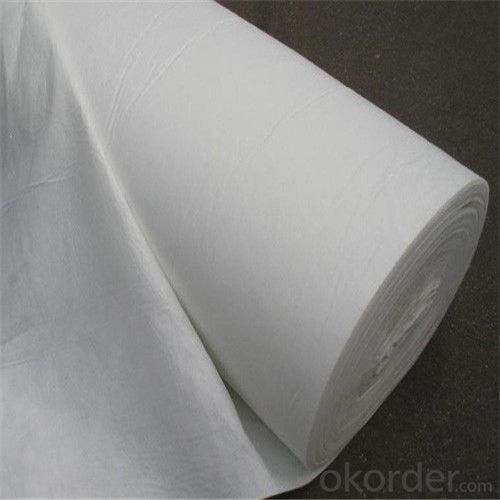
Polypropylene Non-woven Geotextile Application Features:
Can self-seal small cracks while forming watertight laps at the seams.
Provides a strong mechanical bond to poured concrete.
Proven effective in structures under continuous or intermittent hydrostatic pressure-up to 70m (231 ft).
Can be installed in virtually any weather condition, including freezing temperatures and damp conditions. Can be installed on green concrete without primers or adhesives.
Proven effective in both vertical and horizontal applications-i.e., backfilled and property-line walls.

Polypropylene Non-woven Geotextile Packaging & Shipping:
Packing: Plastic Film or Woven bag;
Shipping: About 15 days after receipt the deposit
Polypropylene Non-woven Geotextile Quality Assurance:
1.On a regular basis or as per your request,we entrust national testing agencies to conduct quality inspections
2. Strictly in accordance with the ISO9001-2008 international quality system standard,we monitor and manage the whole process throughout production,quality testing,and measurement to ensure product quality
3. For quality-related construction delay or substandard construction(except for damage or losses due to customer’s responsibility or irresistible natural disasters),we have refunding,replacement,and repair services.We will respond to customers’ feedbacks on quality issues within 24 hours.
- Q:Geomembrane upstream protective layer with what material? The Why can not you use clay?
- The protective layer should be a geotextile because the geotextile is durable than clay.
- Q:How do geotextiles help with load transfer in foundation systems?
- Geotextiles help with load transfer in foundation systems by providing a stable and strong layer of reinforcement. They distribute the load from the structure evenly to the underlying soil, preventing differential settlement and improving overall stability. Additionally, geotextiles can enhance the bearing capacity of weak soils and minimize the potential for erosion, thus increasing the longevity and performance of the foundation system.
- Q:What causes the geotextile aging phenomenon
- Gundam has the characteristics of the product we are all obvious, both in the highway, dams, railways and many other occasions have a very strong product features, and the performance is very outstanding, geotextile is an irreplaceable geotechnical material. Although the geotextile has unparalleled advantages, but the product is not perfect that any product has more or less problems or less, geotextile is the same, its aging problem has been with us, then in the end what causes Geotextile aging? Geotextile aging problem refers to the geotextile in the sun by the smell, temperature changes, biological erosion, chemical corrosion, moisture and other external factors, so that the geotextile strength and performance gradually weakened, loss of seepage effect. UV radiation intensity changes with the intensity of solar radiation, geotextile aging speed with the intensity of UV radiation and speed. Synthetic polymer polymer is concerned, the sun radiation is the main factor in the degradation of polymer degradation. UV radiation in the sun is the most important factor in the aging of the fabric. The ultraviolet radiation causes the polymer to produce a photooxidative decomposition reaction, especially ultraviolet light at a wavelength of 290 to 400 mPm, which has a significant decomposition effect on the polymer , Because the geotextile in the range of ultraviolet light energy is higher than the polymer chemical steamed broken the required energy, so the polymer material aging is very obvious.
- Q:What is the role of the laying of geotextiles at the bottom of the grassland?
- From the soil and soil, fixed slope protection, anti-erosion, anti-filter (over the water, but soil) and other effects, I professional production geotextile, geomembrane and other products, wish smooth
- Q:Polyester filament nonwoven is filament geotextile
- Yes, generally do geotextile material, polyester filament nonwoven fabric refers to filament geotextile. Huazhi geotechnical materials manufacturers to answer your questions
- Q:Can geotextiles be used for reinforcement in landfills?
- Yes, geotextiles can be used for reinforcement in landfills. Geotextiles are commonly used as a geosynthetic material in landfill construction and operation. They are placed within the landfill to improve stability, prevent soil erosion, and enhance the overall strength of the landfill structure. Additionally, geotextiles help to control water flow and filter out contaminants, providing an effective solution for reinforcement in landfills.
- Q:What are the advantages of using geotextiles in waste containment systems?
- Geotextiles offer several advantages in waste containment systems. Firstly, they act as a barrier, preventing the migration of pollutants and contaminants into the surrounding environment. This helps to protect groundwater and nearby ecosystems from potential harm. Additionally, geotextiles enhance the stability and structural integrity of waste containment systems, reducing the risk of failure or leakage. They also aid in the filtration and drainage of liquids, allowing for proper waste management and preventing the buildup of excess moisture. Overall, geotextiles provide an effective and environmentally-friendly solution for waste containment, ensuring safer disposal of waste materials.
- Q:What is the size of the filament geotextile? What are the characteristics of the application?
- What is the size of the filament geotextile? What are the characteristics of the application?
- Q:Do you need to use geotextile for construction site? Mainly used where?
- Underground garage roof green
- Q:How do geotextiles help with soil separation?
- Geotextiles help with soil separation by creating a barrier between different soil layers, preventing mixing and maintaining their distinct characteristics.
1. Manufacturer Overview |
|
|---|---|
| Location | |
| Year Established | |
| Annual Output Value | |
| Main Markets | |
| Company Certifications | |
2. Manufacturer Certificates |
|
|---|---|
| a) Certification Name | |
| Range | |
| Reference | |
| Validity Period | |
3. Manufacturer Capability |
|
|---|---|
| a)Trade Capacity | |
| Nearest Port | |
| Export Percentage | |
| No.of Employees in Trade Department | |
| Language Spoken: | |
| b)Factory Information | |
| Factory Size: | |
| No. of Production Lines | |
| Contract Manufacturing | |
| Product Price Range | |
Send your message to us
Polypropylene Non-woven Geotextile or Non Woven Fabric
- Loading Port:
- China main port
- Payment Terms:
- TT or LC
- Min Order Qty:
- 2000 m²
- Supply Capability:
- 1000000 m²/month
OKorder Service Pledge
OKorder Financial Service
Similar products
New products
Hot products
Hot Searches
Related keywords
